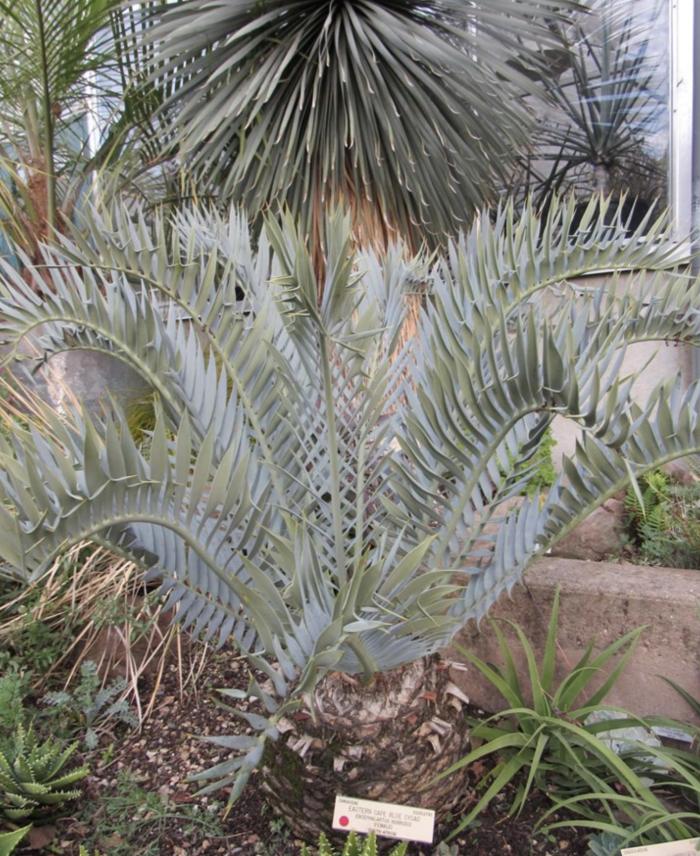Encephalartos horridus
Eastern Cape blue cycad

Description
Encephalartos horridus, commonly called ferocious blue cycad (also eastern cape blue cycad), is a slow-growing, small to medium-sized, evergreen blue cycad that is native to rocky outcroppings, slopes and ridges in Eastern Cape Province, South Africa. It is a small, palm-like, tropical plant that features pinnate, spiny, blue-green leaves and large seed cones. From thick tuberous roots, each mature plant forms a short, stocky trunk, all or a part of which is often subterranean, with pinnate, recurving leaves rising on stems to 2-3' tall in a dense terminal crown. Hard, lanceolate, spine-tipped leaflets emerge silver blue, but typically age over time to blue green or green. Leaflets give rise to the specific epithet (horridus from Latin meaning prickly). This cycad is dioecious (separate male and female plants). Red-brown flowering cones (to 16" long) appear in summer. Male cones are cylindrical and female cones are oval. Winter hardy to USDA Zones 10-12 where it can be grown outdoors in deep, organically rich, fertile, dry to medium moisture, well-drained soils in full sun. Full sun is needed for best blue leaf color. Best performance occurs in soils with even moisture, but avoid overwatering. Tolerates drought. Tolerates an occasional light frost. May be propagated from suckers. Plants grown by seed take several years to mature. North of USDA Zone 10, plants may be grown in containers must be overwintered indoors in cool, bright, sunny locations. Uniquely attractive leaves provide excellent accent to gardens in frost free areas. Good mixed with succulent plants. Grow in conservatories, warm greenhouses or as indoor potted plants north of USDA Zone 10. Excellent trunkless indoor container plant when young. Plants may be difficult to obtain in commerce. Eventually reaches 3' tall and 4' wide.
Plant Type
Palm
Height Range
1-3'
Width Range
Flower Color
n/a
Flower Season
n/a
Leaf Color
Blue Green
Bark Color
Brown
Fruit Color
Brown, Red
Fruit Season
Winter
Sun
Full
Water
Low
Growth Rate
Slow
Soil Type
Loam
Soil Condition
Rich, Well-drained
Soil pH
Neutral
Adverse Factors
Thorns/Spines
Design Styles
Mediterranean, Ranch, Tropical
Accenting Features
Specimen, Unusual Foliage
Seasonal Interest
Winter, Spring, Summer, Fall
Location Uses
Entry, Lawn, Raised Planter, Roadside
Special Uses
Container
Attracts Wildlife
n/a
Water Saving Tip:
Check your irrigation controller once a month, and adjust as necessary.
Most plants require only one-third as much water in winter as they do in summer.